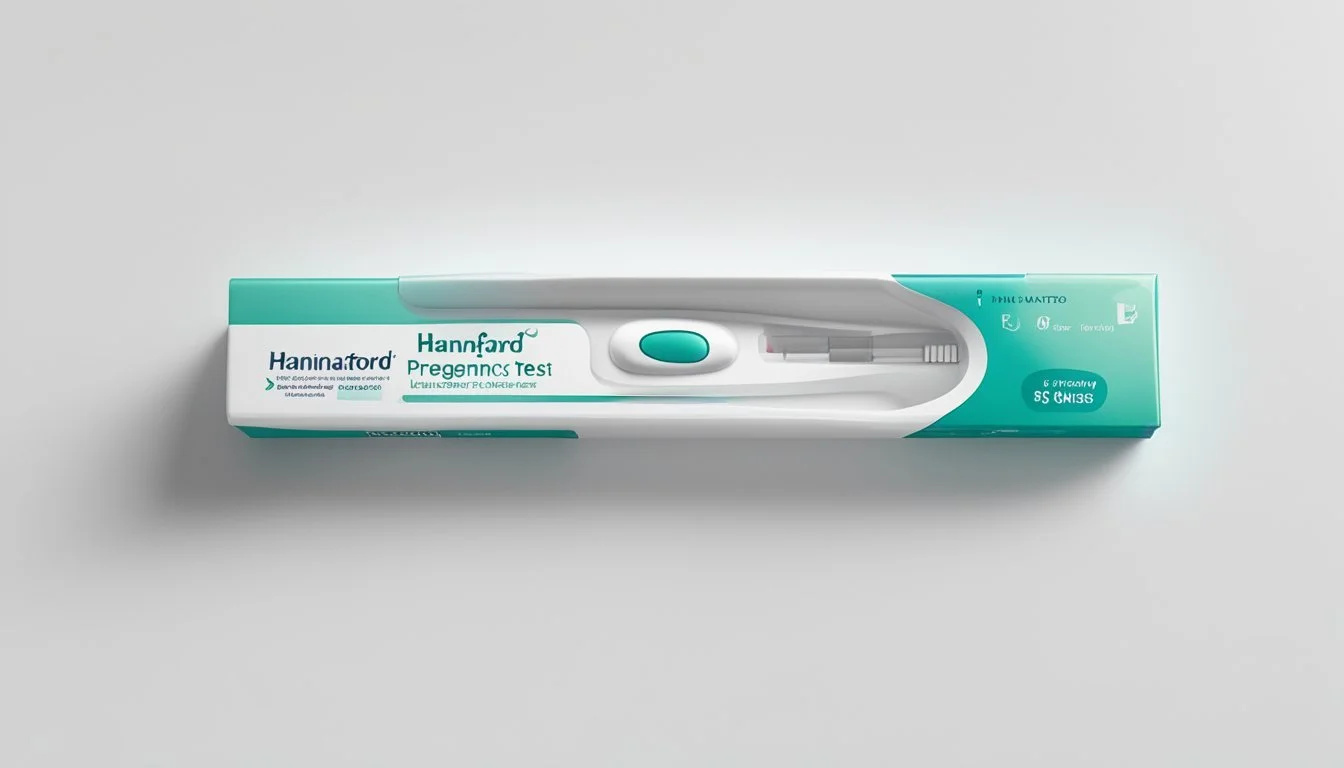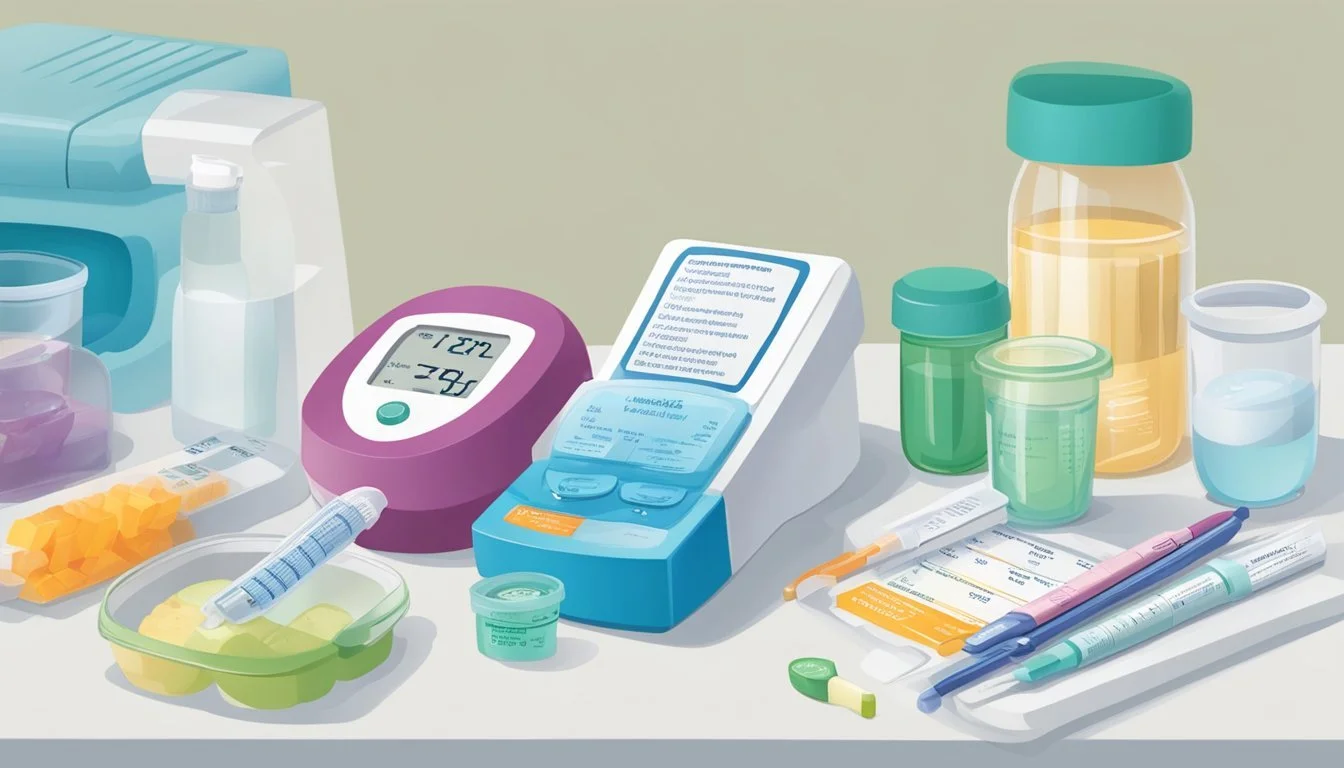Hannaford Pregnancy Test
Reliable Results at Your Local Supermarket
Hannaford Supermarket offers several pregnancy test options for customers seeking reliable at-home testing. These include the First Response 1-Step and e.p.t. Digital Pregnancy Tests, both available in 2-count packages. Hannaford pregnancy tests provide quick and accurate results, detecting the pregnancy hormone hCG in urine.
For optimal accuracy, it's recommended to take a pregnancy test first thing in the morning when hormone levels are most concentrated. While tests can be used at any time of day, early morning testing may yield more reliable results, especially if testing before a missed period.
Hannaford pregnancy tests can be conveniently purchased in-store or through online shopping services like Instacart for same-day delivery. This accessibility allows individuals to discreetly obtain pregnancy tests and get answers quickly from the comfort of their own homes.
Understanding Pregnancy Tests
Pregnancy tests are essential tools for detecting early pregnancy. They provide quick and reliable results by measuring hormone levels in urine or blood.
Types of Pregnancy Tests
Home pregnancy tests are widely available and come in two main formats: digital and traditional. Digital tests display results as words, such as "pregnant" or "not pregnant." Traditional tests show lines, colors, or symbols like "+" or "-" signs.
Urine tests are the most common type for home use. They're affordable, easy to use, and provide results within minutes. Blood tests are typically performed at medical facilities and can detect pregnancy earlier than urine tests.
Some tests claim to detect pregnancy before a missed period, but these may be less accurate. It's often best to wait until after a missed period for the most reliable results.
How Pregnancy Tests Work
Pregnancy tests detect the presence of human chorionic gonadotropin (hCG) in urine or blood. This hormone is produced by the placenta shortly after a fertilized egg implants in the uterus.
When using a home pregnancy test, urine is applied to a test strip or stick. The test contains antibodies that react with hCG if it's present. This reaction triggers the display of a positive result.
Most tests are designed to detect hCG levels of 25 mIU/mL or higher. Some early detection tests can identify lower levels, potentially providing results sooner.
Hormones and HCG Levels
HCG levels rise rapidly in early pregnancy, typically doubling every 48-72 hours. This increase allows pregnancy tests to become more accurate as time passes after conception.
HCG levels can vary widely between individuals. Generally, they become detectable in urine about 10-14 days after conception. Blood tests can detect hCG earlier, sometimes as soon as 7-10 days post-conception.
Factors like the time of day, hydration levels, and medication use can affect hCG concentration in urine. For the most accurate results, it's best to use first-morning urine when hCG levels are most concentrated.
Using Home Pregnancy Tests
Home pregnancy tests provide a quick and convenient way to check for pregnancy from the comfort of your own bathroom. These urine-based tests detect the presence of human chorionic gonadotropin (hCG), a hormone produced during early pregnancy.
Step-By-Step Instructions
Read the instructions carefully before starting.
Collect urine in a clean cup or urinate directly on the test stick, depending on the test type.
If using a dropper, place the specified amount of urine on the test area.
Wait for the recommended time, usually 3-5 minutes.
Check the results window for lines or symbols indicating the outcome.
Dispose of the test properly after use.
Always check the expiration date before using a test. For best results, use first-morning urine as it contains the highest concentration of hCG.
When to Take the Test
Take a pregnancy test on the first day of a missed period for most accurate results. Some sensitive tests can detect pregnancy up to 5 days before a missed period.
Testing too early may lead to false-negative results. If the first test is negative but pregnancy is still suspected, wait a few days and test again.
For women with irregular cycles, it's best to test at least 21 days after the last instance of unprotected sex.
Certain medications can affect test results. Consult a healthcare provider if unsure about timing or if taking fertility treatments.
Understanding Test Results
A positive result typically shows two lines or a plus sign. Even a faint line usually indicates pregnancy. Digital tests display "Pregnant" or "Not Pregnant" for clarity.
Negative results show one line or a minus sign. False-negatives can occur if testing too early or if urine is too diluted.
An invalid result, often indicated by no control line, means the test didn't work properly. Repeat with a new test.
Be aware of evaporation lines, which may appear after the recommended reading time. Always interpret results within the specified timeframe.
If results are unclear or unexpected, consult a healthcare provider for confirmation and guidance.
Factors Affecting Test Accuracy
Several key factors can influence the accuracy of pregnancy tests. These include medications and health conditions, fertility treatments, and the timing of when the test is taken. Understanding these factors is crucial for obtaining reliable results.
Medications and Health Conditions
Certain medications and health conditions can affect pregnancy test results. Some fertility drugs contain hCG, which may lead to false positive results. Antibiotics, anticonvulsants, and tranquilizers typically don't interfere with test accuracy.
Health conditions like ovarian cysts or certain cancers can produce hCG, potentially causing false positives. Conversely, kidney disease or urinary tract infections may dilute urine, leading to false negatives.
It's important to inform a healthcare provider about any medications or health issues when interpreting test results.
Fertility Treatments Impact
Fertility treatments can significantly influence pregnancy test accuracy. IVF procedures often involve hCG injections to trigger ovulation, which can remain in the body for up to 14 days.
During this time, home pregnancy tests may detect the injected hCG rather than pregnancy-produced hCG, resulting in false positives. Women undergoing fertility treatments should consult their doctor about the optimal timing for testing.
Some fertility drugs don't contain hCG but can still affect hormone levels, potentially impacting test results. It's crucial to follow medical advice when testing after fertility treatments.
Timing of the Test
The timing of a pregnancy test is critical for accuracy. Testing too early is a common cause of false-negative results. Most home tests can detect hCG about 12-14 days after conception.
For the most reliable results, it's best to wait until after a missed period. Testing first thing in the morning when urine is most concentrated can improve accuracy.
Factors like irregular cycles or miscalculation of ovulation dates can lead to mistimed tests. If the initial test is negative but pregnancy is still suspected, it's advisable to retest after a few days.
Interpreting Test Results
Correctly interpreting pregnancy test results is crucial for accurate family planning and health decisions. Understanding the meaning of positive and negative outcomes, as well as potential factors affecting results, can guide appropriate next steps.
Positive Results and Next Steps
A positive pregnancy test indicates the presence of human chorionic gonadotropin (hCG) in urine or blood. Two lines on a test strip, even if one is faint, typically signify pregnancy. Digital tests may display "Pregnant" or a plus sign.
Upon seeing a positive result, schedule an appointment with a healthcare provider. They can confirm the pregnancy through blood tests and ultrasound. Early prenatal care is essential for monitoring the health of both mother and baby.
Be aware that false positives can occur, though rare. Certain medications or medical conditions may interfere with test accuracy.
Negative Results and Considerations
A negative result shows only one line on the test strip or "Not Pregnant" on a digital test. This suggests hCG levels are not detectable in the urine.
If the test is negative but pregnancy is still suspected, wait a few days and test again. Early testing or diluted urine can lead to false-negative results.
Some women may not produce enough hCG for detection until after a missed period. Blood tests can detect pregnancy earlier than urine tests.
Consider factors like stress, changes in diet, or certain medications that might affect menstrual cycles and test timing.
Consulting Healthcare Professionals
Regardless of the test result, consulting a healthcare provider is advisable for personalized guidance. They can offer more accurate testing methods and address any concerns.
For positive results, healthcare providers can confirm the pregnancy and initiate prenatal care. They'll discuss important topics like nutrition, potential risks, and fetal development.
With negative results, healthcare professionals can help investigate possible reasons for missed periods or pregnancy-like symptoms. They may recommend blood tests or pelvic exams for a more comprehensive evaluation.
Healthcare providers can also offer advice on family planning, fertility concerns, or alternative explanations for symptoms mimicking pregnancy.
Choosing the Right Pregnancy Test
Selecting an appropriate pregnancy test involves considering sensitivity, test format, and budget. Key factors include accuracy, ease of use, and accessibility.
Test Sensitivity and Specificity
Pregnancy tests detect human chorionic gonadotropin (hCG) in urine. More sensitive tests can detect lower levels of hCG, potentially providing earlier results. First Response Early Result is known for high sensitivity, detecting pregnancy up to 6 days before a missed period.
Test specificity refers to accuracy in negative results. High-quality tests minimize false positives. Blood tests conducted by healthcare providers offer the highest sensitivity and specificity but are less convenient than at-home options.
When selecting a test, check the stated sensitivity level. Tests with lower mIU/mL thresholds can detect pregnancy sooner.
Digital vs. Standard Tests
Digital tests provide clear "pregnant" or "not pregnant" readouts, reducing interpretation errors. Clearblue Digital Pregnancy Test offers this feature, along with an estimate of weeks since conception.
Standard tests display lines or symbols, requiring careful reading of instructions. These can be more affordable and are often preferred by those who test frequently.
Digital tests may be easier to use but typically cost more. Consider personal preference and budget when choosing between digital and standard formats.
Cost and Availability
Pregnancy test prices vary widely. Basic test strips are often the least expensive option, available in bulk packages. Hannaford Supermarket offers various options, including First Response and Clearblue brands.
Drugstores and supermarkets typically stock a range of tests. Online retailers may offer better prices on bulk purchases. Consider how frequently you plan to test when deciding on quantity and price point.
Inexpensive tests can be as accurate as pricier options if used correctly. However, some women prefer the reassurance of well-known brands or digital displays despite the higher cost.
Lifestyle and Pregnancy Tests
Lifestyle factors play a crucial role in fertility, conception, and the accuracy of pregnancy tests. Understanding these factors can help individuals make informed decisions about their reproductive health.
Tracking Ovulation and Fertility
Tracking ovulation is essential for those trying to conceive. Ovulation predictor kits detect luteinizing hormone surges, indicating the most fertile days. Basal body temperature charting and cervical mucus monitoring are other effective methods.
Fertility apps can help track cycles and predict ovulation. Some women use fertility-friendly lubricants to enhance conception chances. Irregular cycles may require closer monitoring or consultation with a healthcare provider.
Regular intercourse during the fertile window increases the likelihood of conception. Stress reduction techniques like yoga or meditation can positively impact fertility.
Diet, Exercise, and Pregnancy Test Accuracy
A balanced diet rich in folic acid, iron, and other essential nutrients supports reproductive health. Regular exercise promotes overall well-being but should be moderate when trying to conceive.
Certain foods and beverages can affect pregnancy test results:
Diuretics (coffee, tea) may dilute urine, potentially impacting test accuracy
Vitamin C supplements might interfere with some tests
Alcohol consumption can affect hormone levels
Maintaining a healthy BMI is important for fertility and accurate test results. Extreme weight fluctuations can disrupt menstrual cycles and hormone balance.
Staying hydrated is crucial, but excessive fluid intake before testing may dilute hCG levels in urine.
Emotional Considerations
Taking a pregnancy test can be an emotional experience. It's important to create a supportive environment when testing.
Timing is crucial:
Wait until after a missed period for most accurate results
Consider testing in the morning when hCG levels are most concentrated
False negatives can occur if testing too early. Retesting after a few days is recommended if the first result is negative but pregnancy is still suspected.
Discussing potential outcomes with a partner or trusted friend can help manage expectations. Some couples choose to test together for mutual support.
If recurrent negative tests occur despite trying to conceive, consulting a healthcare provider may be beneficial.
Additional Considerations
Proper storage, expiration dates, and accessibility are crucial factors when using Hannaford pregnancy tests. These aspects can significantly impact test accuracy and reliability.
Storing Pregnancy Tests
Hannaford pregnancy tests should be stored in a cool, dry place away from direct sunlight. The ideal temperature range is between 36-86°F (2-30°C). Avoid keeping tests in bathrooms, as humidity can affect their performance.
Protect the tests from extreme temperatures. Excessive heat or cold can degrade the chemicals used in the test, potentially leading to inaccurate results.
Keep pregnancy tests in their original, sealed packaging until use. This prevents contamination and ensures the test strips remain sterile.
Test Expiration and Proper Usage
Check the expiration date printed on the package before using a Hannaford pregnancy test. Expired tests may produce unreliable results.
Follow the instructions carefully. Read them before starting the test, and adhere to the recommended waiting time for results.
Use the test on the first day of a missed period for optimal accuracy. Testing too early can lead to false negatives.
Digital tests often provide clearer results and are less prone to misinterpretation compared to traditional line tests.
Where to Buy Hannaford Pregnancy Tests
Hannaford pregnancy tests are available at Hannaford grocery stores. Look for them in the family planning or healthcare aisles.
Many Hannaford locations offer self-checkout options for added privacy when purchasing pregnancy tests.
Consider buying multiple tests to confirm results. Hannaford often sells pregnancy tests in multi-packs for convenience and cost savings.
Online ordering and curbside pickup services may be available at some Hannaford locations, providing discreet purchase options.









